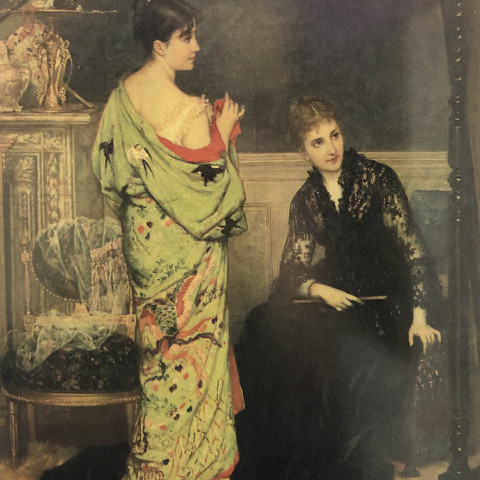Frans Verhas was among the chief followers of his fellow Belgian painter Alfred Stevens. Much like Stevens, Verhas is best known for his richly-detailed paintings of elegant women in bourgeois interiors wearing the latest fashions of the day. Verhas was particularly admired for his ability to render a wide range of textures within his paintings, a skill that is on full display in the present work. From the rich tones of the inlaid wood on the cabinet, to the smooth, cool ceramic objects, to the animal skin rug on the floor, Verhas has captured the myriad elements of the room with typical accuracy and bravado. Of course, the artist’s pièce de résistance in this composition is the sitter’s vibrant green kimono, elaborately embroidered with decorations of birds, branches, and flowers. The work was painted in 1881 at the height of Japonisme, the vogue for all things Japanese that swept across Europe in the second half of the 19th century.Following the Meiji Restoration in 1868, Japan ended a long period of national isolation and became open to trade with the West. Many European artists found themselves captivated by the Japanese ceramics and Ukiyo-e prints newly available in chic shops in Paris and London. Among the major artists of the period who drew inspiration from Japanese art and dress were Vincent van Gogh, James Tissot, Claude Monet, Louis Comfort Tiffany, and James McNeill Whistler. The kimono in the present work must have been a studio prop which belonged to Verhas himself, purchased to reuse in different paintings to meet the demand for Japanese-inspired works among the artist’s buyers, as the same distinctive kimono appears in several different paintings by the artist of this same period.
Source: askart.com

